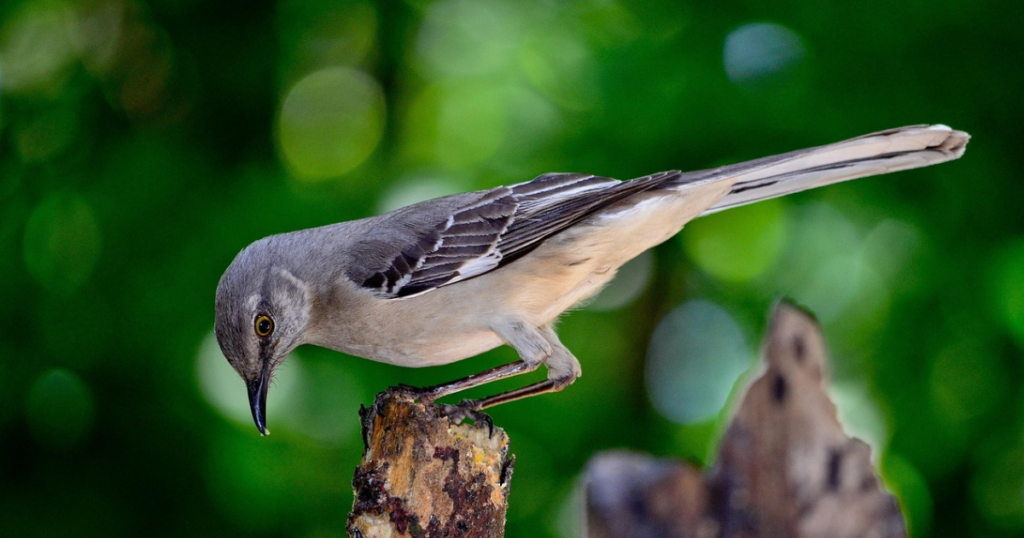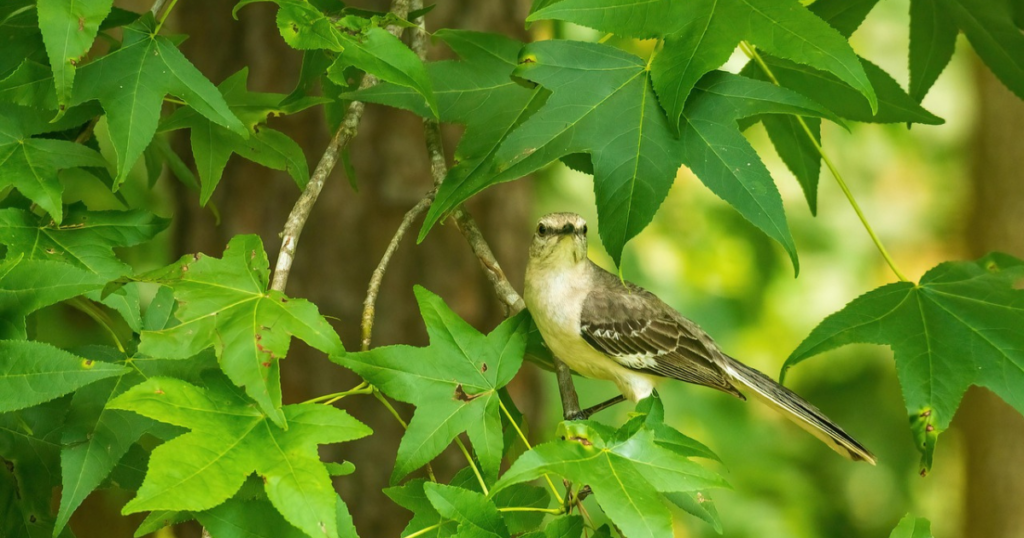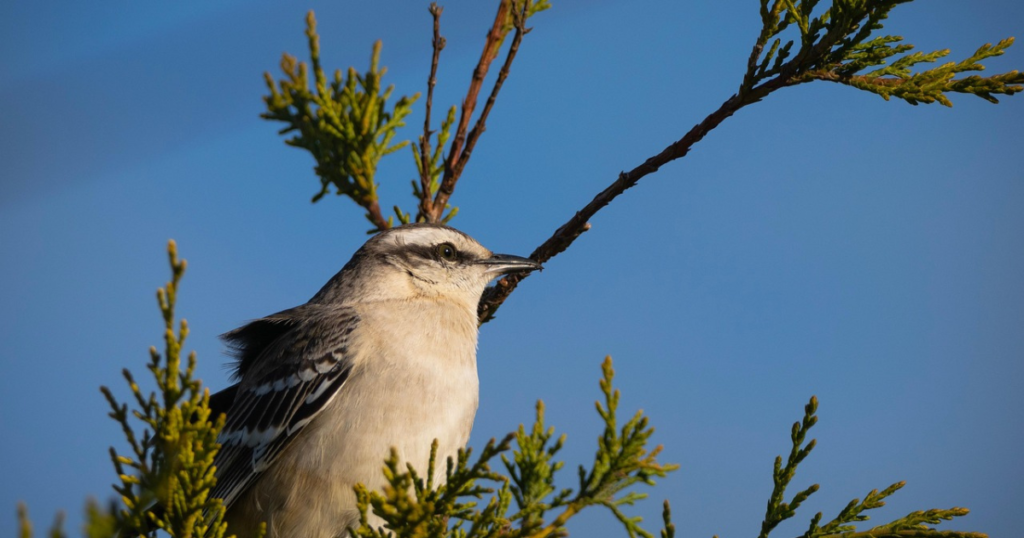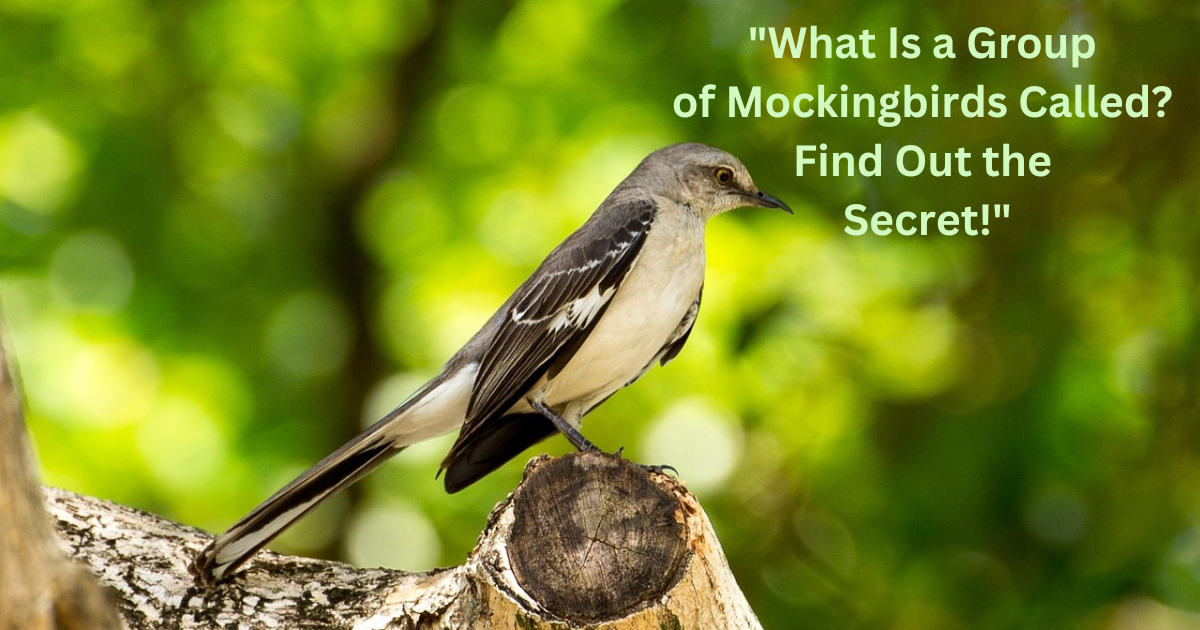Mockingbirds, known for their extraordinary ability to mimic various sounds and their graceful flight are one of nature's most captivating creatures. From their mesmerizing songs to their dazzling aerial displays these birds have earned their place in our hearts. But what about their social gatherings? What do we call a group of mockingbirds? Let’s explore the collective terms and dive deeper into their fascinating behavior.
Unveiling the Mockingbird
Mockingbirds belong to the family Mimidae and are renowned for their vocal versatility. With the ability to mimic over 200 different sounds these birds stand out for their mimicry and agility. They are found across North and South America, often in areas where they can perch and sing from high places such as trees or rooftops.
Collective Nouns in the Bird World
The English language is full of fascinating collective nouns for birds reflecting their behaviors, sounds and characteristics. You may have heard terms like a flock of sparrows or a murder of crows. These terms are used to describe how birds interact with each other in groups and understanding them helps birdwatchers communicate better and appreciate bird behavior more deeply.
Why Do Collective Terms Matter?
Birdwatching is more than just observing; it’s about connecting with the nature around us. The use of collective nouns for birds gives us a poetic lens through which we can view these creatures. For example the term parliament for owls reflects their wise almost mystical nature while the term gaggle for geese hints at their noisy chaotic gatherings. For mockingbirds the term used is just as meaningful offering insight into their unique qualities.
Social Habits of Mockingbirds
Though mockingbirds are often seen as solitary they do have interesting social dynamics. They are territorial and during the breeding season you might observe pairs forming and fiercely defending their space. In other times you may catch them in small groups especially outside of the breeding season. Their social behaviors are a key part of what makes mockingbirds so intriguing.

The Fascinating Group Name of Mockingbirds
Now to answer the burning question: What is a group of mockingbirds called? The most popular term for a gathering of these charming birds is a museum of mockingbirds. This term highlights their diverse and captivating songs much like a museum with its collection of exhibits. Alternatively, they can also be referred to as a charm which fits the magical allure of these mimicry experts.
The Charm of Mockingbirds
The term charm is fitting for mockingbirds due to their enchanting songs and delicate flitting movements. Much like the shimmering wings of a hummingbird or the sparkle of sunlight on dew mockingbirds possess an innate charm that captivates anyone who listens to their vocal performances. The term reflects their beauty and grace in the air and their enchanting ability to mimic a wide range of sounds.
Other Collective Terms for Birds
Beyond mockingbirds the bird world offers a variety of other fascinating collective nouns. For instance a flock of pigeons or a kettle of hawks. These terms serve as a reminder of how language can reflect the different ways birds interact whether in peaceful gatherings or intense territorial disputes.
Mockingbird Habitat and Distribution
Mockingbirds are incredibly adaptable and can be found in various environments across the Americas. From suburban yards to expansive deserts these birds are a common sight. They thrive in areas that offer plenty of opportunities for perching, singing and foraging.
Mockingbirds in Urban vs. Natural Spaces
In urban settings mockingbirds have adapted to city life often seen perched on telephone wires or light posts filling the air with their melodies. In contrast rural mockingbirds are more commonly found in open fields and forests where they can sing from the top of tall trees and mimic the sounds of other animals.
Sounds of a Mockingbird
Mockingbirds are masters of vocal mimicry. They can imitate the calls of over 200 different bird species including hawks, crows and even non-bird sounds like car alarms and chainsaws. This mimicry plays a critical role in both communication and territorial defense.
Mimicry: Nature’s Communication Tool
Why do mockingbirds mimic so many different sounds? Part of the reason is that mimicry helps them communicate with other birds whether it's to attract a mate or warn others of a potential threat. By copying the calls of predators or larger birds mockingbirds can ward off rivals and protect their territory.

Mockingbird Diet and Feeding Behavior
Mockingbirds are omnivores with a diet that includes a mix of insects, berries, seeds and sometimes even small reptiles. Their feeding habits are just as fascinating as their songs and they are known to forage widely for food.
Foraging and Food Gathering
Mockingbirds are opportunistic feeders. They are often seen hunting for insects on the ground or plucking berries from bushes. Their sharp eyes and quick reflexes allow them to gather food efficiently and they may even hide food to eat later.
Mimicking Feeding Noises
In addition to mimicking bird songs mockingbirds sometimes imitate the sounds associated with feeding like the rustling of leaves or the calls of other birds eating. This behavior further showcases their intelligence and ability to adapt to different situations.
Mockingbird Symbolism and Cultural Impact
Mockingbirds are more than just fascinating creatures; they have cultural and symbolic significance as well. Across literature, mythology and art these birds often symbolize beauty, freedom and the power of communication.
From Fiction to Folklore
Mockingbirds have long been featured in literature and folklore. In Harper Lee's classic novel To Kill a Mockingbird the bird represents innocence and the unjust destruction of purity. Their symbolism has transcended literature, inspiring poets, artists and bird lovers alike.

Conclusion
Mockingbirds are truly extraordinary creatures with their remarkable songs territorial behaviors and fascinating mimicry. Whether they are called a museum or a charm these birds continue to captivate us with their beauty and grace. Understanding the terms used to describe their groups only enhances our appreciation of their role in the natural world.
FAQs
What is a group of mockingbirds called?
A group of mockingbirds is called a museum or charm.
Why can mockingbirds mimic so many sounds?
Mockingbirds mimic sounds to communicate defend their territory and attract mates.
Where are mockingbirds found?
Mockingbirds are found across the Americas in both urban and rural environments.
What do mockingbirds eat?
Mockingbirds are omnivores and feed on insects, fruits, seeds and small reptiles.
What does the mockingbird symbolize in literature?
Mockingbirds symbolize innocence, beauty and freedom, often appearing in works like To Kill a Mockingbird.
